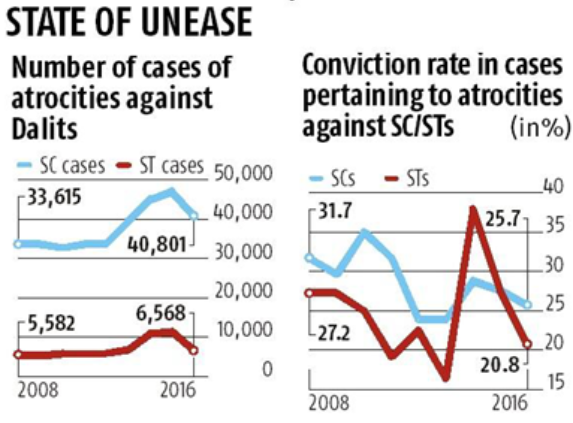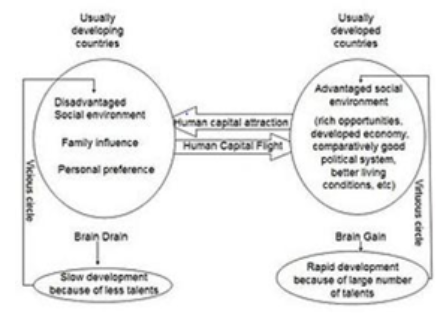Tuesday, 10th October 2023
Nobel Prize in Chemistry - Edukemy Current Affairs
In News: Nobel Prize in Chemistry 2023 awarded to Moungi G Bawendi, Louis E Brus, and Alexei I Ekimov for their groundbreaking discovery and synthesis of quantum dots by Royal Swedish Academy.
About Quantum Dots
- Quantum dots are nanoscale particles, typically ranging in size from 1 to 100 nanometers. These minuscule structures possess unique properties that are governed by their size. Size of quantum dots determines the colour of light they emit, with smaller dots emitting blue light and larger ones shining in yellow and red.
|
Contribution of Nobel Laureates': |
|
Applications of Quantum Dots
- Display Technology: Quantum dots are used in display technology to enhance the quality of screens, including LED lamps and television screens. They emit clear and vibrant light, leading to improved color accuracy and energy efficiency in displays.
- Medical Imaging: Quantum dots are employed in medical imaging to illuminate tissues during surgery. They can be used as fluorescent markers to target specific cells or structures, aiding surgeons in precise removal. Their nanoscale size is ideal for use in tiny sensors for diagnostic purposes.
- Flexible Electronics: Quantum dots hold promise for flexible electronics, where they can be integrated into flexible substrates. This technology paves the way for innovative and adaptable devices, including wearable electronics, flexible displays, and electronic skin.
- Solar Cells: Quantum dots can be used in the development of more efficient and compact solar cells. Their unique electronic properties can be harnessed to improve the efficiency of converting sunlight into electricity, contributing to advancements in renewable energy solutions.
- Encrypted Quantum Communication: Quantum dots may play a role in the development of secure quantum communication technologies. Quantum communication relies on the principles of quantum mechanics to create highly secure encryption methods, protecting sensitive information from eavesdropping.
- Biological Labeling and Imaging: Quantum dots are valuable tools in biology and biotechnology. They can be used for labeling and tracking specific molecules or cells within biological systems. Their brightness, photostability, and tunable emission wavelengths make them versatile for a range of imaging and diagnostic applications.
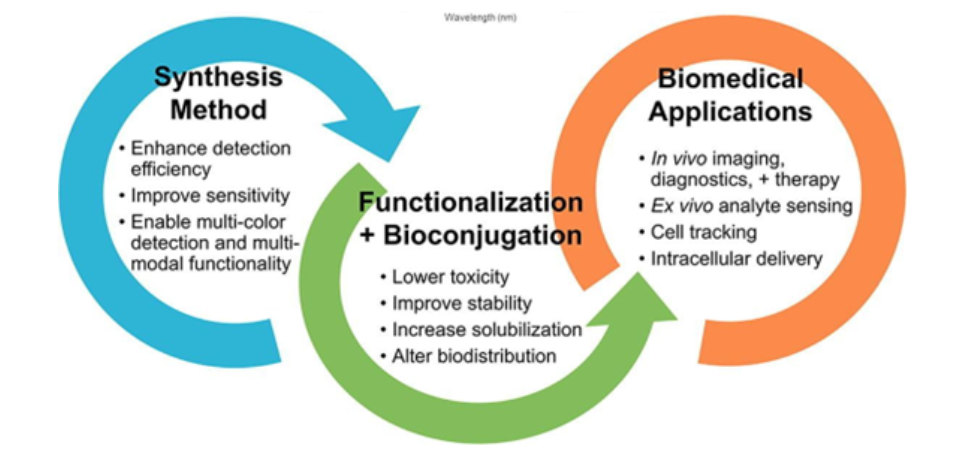
- Quantum Dot Lasers: Quantum dots can be incorporated into laser devices, offering advantages such as low threshold current and tunable emission wavelengths. They find applications in telecommunications, data transmission, and laser displays.
- Quantum Dot Sensing: Quantum dots can be used in sensors to detect a variety of analytes, including gases, chemicals, and biological molecules. Their sensitivity and selectivity make them valuable in environmental monitoring, healthcare diagnostics, and industrial sensing applications.
 https://www.thehindu.com/sci-tech/science/2023-nobel-prize-chemistry/article67377618.ece
https://www.thehindu.com/sci-tech/science/2023-nobel-prize-chemistry/article67377618.ece
Metal Mining Pollution - Edukemy Current Affairs
In News: Recently, the University of Lincoln, the United Kingdom, has published a study, spotlighting the extensive ramifications of Metal Mining Pollution in rivers and Floodplains worldwide.
About
The research conducted a simulation of contamination emanating from both active and abandoned Metal Mining Sites, which included critical aspects like tailings facilities designed for waste storage. The study conducted a thorough assessment of harmful substances such as lead, zinc, copper, and arsenic.
|
Key outcome of the Study |
|
Metal Mining Pollution
- Metal mining pollution encompasses the contamination and environmental harm caused by the extraction and processing of metallic ores to extract valuable metals.
- This pollution stems from various mining-related activities, including exploration, extraction, transportation, processing, and waste disposal. These processes frequently release harmful substances into the atmosphere, water bodies, and soil, leading to detrimental impacts on ecosystems, human well-being, and wildlife.
The sources of metal mining pollution include:
- Tailings: Tailings are finely ground rock particles left behind after valuable metals have been separated from the ore. These tailings often contain hazardous elements like mercury, arsenic, lead, cadmium, and other toxic substances, which can seep into nearby water sources and soil, causing contamination.
- Acid Mine Drainage (AMD): AMD occurs when sulfide minerals in mined rocks are exposed to air and water, resulting in the production of sulfuric acid. This acid can contaminate rivers, streams, and groundwater, posing a significant threat to aquatic life and ecosystems.
- Airborne Pollution: Dust and particulate matter generated during mining operations can become airborne, spreading pollutants such as heavy metals and other harmful compounds. Inhaling these pollutants can pose health risks to both miners and nearby communities.
- Chemical Usage: Chemicals like cyanide and sulfuric acid are commonly used in metal extraction processes. Accidental spills or inadequate containment of these chemicals can lead to soil and water contamination, causing severe environmental damage.
Steps to address Metal Mining Pollution
- Stringent Regulations and Compliance:
- Implement and enforce strict environmental regulations and standards specific to metal mining operations.
- Ensure that these regulations cover various aspects, including waste disposal, emissions, water management, and land reclamation, to guarantee compliance and minimize pollution.
- Advanced Waste Management:
- Promote the use of modern tailings storage facilities and waste disposal methods that minimize the risk of pollution.
- Employ strategies to prevent tailings dam failures through proper design, regular monitoring, and periodic safety assessments.
- Responsible Chemical Usage:
- Encourage responsible and controlled use of chemicals in mining processes.
- Explore and adopt alternative, less toxic chemicals to reduce the environmental impact of metal extraction.
- Water Management and Treatment:
- Implement effective water management strategies to control and treat water discharged from mining operations.
- Utilize advanced water treatment technologies to remove harmful substances from wastewater before releasing it into the environment.
- Mine Reclamation and Rehabilitation:
- Make mine reclamation and rehabilitation an integral part of mining operations from the outset.
- Restore mined areas to their natural state, including re-vegetation and habitat restoration, to promote ecosystem recovery and biodiversity.
- Monitoring and Reporting:
- Establish a robust monitoring and reporting system to track and assess the environmental impact of mining activities continuously.
- Regularly share data and findings with regulatory agencies and the public to ensure transparency and accountability.
Glacial Lake Outburst Flood in Sikkim
Why in News: Recently, Flash floods occurred in north Sikkim after the South Lhonak Lake burst due to incessant rains.
Glaciers:
- Glaciers are large masses of ice that form from the accumulation and compaction of snow over long periods.
- They shape the terrain and play a significant influence in the climate and hydrology of the planet by storing and releasing freshwater as they gently flow downhill under the weight and gravity of their own mass.
- 10% of the Earth's land area is covered by glaciers, but they are quickly thinning down in much of the world, with cascade effects on downstream systems.
Glacial Lake Outburst Flood (GLOF):
- When water that has been held behind a glacier or a moraine is quickly released, it can cause a sudden, possibly disastrous flood known as a GLOF.
- These floods occur when water builds up behind weak moraine barriers in glacial lakes created by melting ice.
- The high slopes of the Himalayan region make it particularly sensitive to GLOFs.
- More than 300 glacial lakes presently exist in the region, eleven of which have been recognised as being at risk of outburst floods.
- Numerous events, such as earthquakes, very strong rainfall, and ice avalanches, may trigger GLOF.
- Some GLOFs in India:
- The unusually heavy rains that Uttarakhand experienced in June 2013 caused the melting of the Chorabari glacier and the eruption of the Mandakini river.
- A glacier lake outburst flood struck the Ladakh settlement of Gya in August 2014.
- The Chamoli district in Uttarakhand had flash floods in February 2021, which are said to have been caused by GLOFs.
How did South Lhonak Lake become susceptible to GLOF?
- About 5,200 meters above sea level, in northern Sikkim, is where the South Lhonak Lake is located.
- The lake has been growing for years, potentially due to the melting of the ice cap at its head, scientists have previously warned.
- Notably, seismic activity, including an earthquake of a magnitude of 6.9 in 2011, increased the GLOF danger in the region.
- A crucial strategy was undertaken in 2016 by the Sikkim State Disaster Management Authority and other stakeholders to drain extra water from South Lhonak Lake. Visionary innovator Sonam Wangchuk oversaw the project and used High Density Polyethylene (HDPE) pipes to syphon water from the lake. This campaign was effective in lowering the lake's water level by around 50%, somewhat reducing the risk.
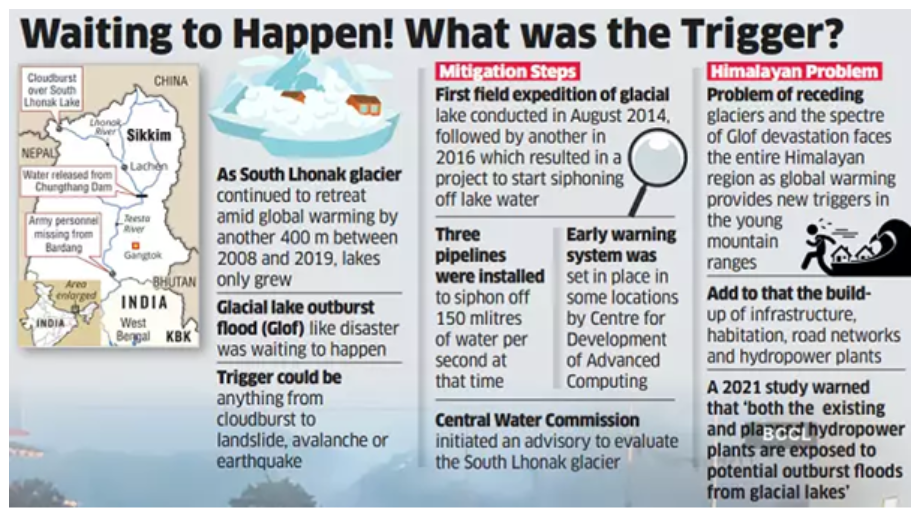
- However, the recent tragedy is believed to be caused by an avalanche originating from the ice-capped feature surrounding the lake.
Measures to be taken to reduce the risk of GLOF:
- Glacial Lake Monitoring: Satellite imagery, remote sensing technology, and field surveys through drones can be used to regularly assess changes in glacial lakes and their associated moraine dams.
- Early Warning Systems: It can provide timely alerts to downstream communities in the event of a GLOF.
- Flood Protection Measures: Some measures like constructing protective barriers, levees, or diversion channels need to constructed to redirect floodwaters away from populated areas.
- Public Awareness: There is a need to raise public awareness about the risks of GLOFs and educate communities living downstream about evacuation procedures and safety measures, as per NDMA’s guidelines related to GLOF.
- International Collaboration: Given that GLOFs may have cross-border effects, India can cooperate with its Himalayan neighbours. The danger can be reduced by exchanging knowledge and best practices for GLOF risk reduction and management with neighbouring countries.
State of Global Internet Freedom in 2023
Why in News: Recently, the report, titled ‘Freedom on the Net 2023: The Repressive Power of Artificial Intelligence’, has raised a red flag on the increasing use of artificial intelligence by governments for censorship and spread of disinformation.
Key Highlights of the Report:
- The report, titled ‘Freedom on the Net 2023: The Repressive Power of Artificial Intelligence’, has been released by Freedom House (a Washington DC-based non-profit organisation).
- AI in Digital Repression: Digital repression heavily relies on artificial intelligence (AI). AI-based technologies are becoming more advanced and widely available, and they are being used to propagate misinformation in at least 16 different nations.
- Legal Consequences for Online Expression: A record number of 55 out of the 70 nations evaluated experienced legal ramifications for online expression. Furthermore, because of their online comments, people were beaten up or killed in 41 different nations.
- The report evaluates countries on five censorship methods – Internet connectivity restrictions, blocks on social media platforms, blocks on websites, blocks on VPNs, and forced removal of content – and India engaged in all of them except one (VPN blocking).
- Nation-wise findings:
- China remained the worst country for Internet freedom for the ninth consecutive year, followed by Myanmar as the second most repressive country for online freedom.
- Iran witnessed a sharp rise in digital repression due to Internet shutdowns, blocking of social media platforms, and increased surveillance to suppress anti-government protests.
- India has incorporated AI-based censorship into its legal framework, impacting freedom of expression and criticism of the ruling party. India scored 50 on a scale of 1 to 100, with higher scores representing greater digital freedom, while Iceland received the highest score of 94, indicating the best climate of Internet freedom.

Censorship in India:
- Code of Criminal Procedure (Cr.P.C): Certain publications and material may be forfeited in accordance with Cr.P.C. Section 95. If any newspaper, book, or document, wherever printed, includes any information that the State Government deems injurious to the state, it is penalised by the State Government via an official notification issued under this provision.
- Central Bureau of Film Certification (CBFC): It controls what is included in films that are made available to the public. Films are subject to prior certification by the CBFC, and broadcasters are required to abide by the certification's requirements under the "Programme Code and Advertisement Code" rules.
- Press Council of India: It controls what enters the media realm and serves as the press's self-regulatory organisation. This organisation emphasises the necessity for media professionals and journalists to practice self-regulation and serves as a watchdog on media material, in general, to determine whether it violates press ethics and the needs of the public.
- Social Media Platforms: So far, it has not been directly supervised by a government agency or subject to a clear rule. Currently, social media usage is governed by the Information and Technology Act, 2000, and in particular, Sections 67A, 67B, 67C, and 69A include the relevant regulatory provisions.
- IT (Intermediary Guidelines & Digital Media Ethics Code) Rules, 2021: These were preceded by changes made to the "Allocation of Business Rules" under the IT Act, 2000, which placed control of digital and online media, including OTT (Over The Top) platforms like Amazon, Netflix, and Hotstar, under the Ministry of Information & Broadcasting (I&B), Government of India. This included films, audio-visual programmes, news, and current affairs content.
- Advantages of Censorship:
- By preventing the revelation of unwanted material that can cause societal unrest, censorship avoids social unrest. Internet filtering can contribute to the preservation of social harmony and public security.
- The stability of society benefits from internet filtering since it can assist in reducing the prevalence of illicit activities and online crimes.
- Government can impose censorship to stop the spread of false news or rumours as well as to limit access to harmful activities by restricting their public exhibition, among other things.
- Internet censorship can filter out undesirable content online and safeguard kids from terrifying websites that feature child pornography, sexual assault, and comprehensive how-to guides for committing crimes or using drugs.
- Challenges to Censorship:
- It can become a tool of moral policing that controls other people's lives rather than concerning itself with larger public issues.
- The new regulations' broad powers also carry the risk of granting the regulatory body arbitrary political influence.
- In India, morality, taste, and disgust have quite different boundaries. Therefore, this level of strict censorship is in direct conflict with the constitutional guarantee of everyone's right to free speech and expression in India.
Dandeli Forest - Edukemy Current Affairs
Why in news? In recent years, rising temperatures and changing rainfall patterns in the Dandeli forest area are impacting the forest ecosystem and the people living around them and dependent on them.
About:
- Dandeli forest is located in the Uttara Kannada district of Karnataka and is part of the Western Ghats, a globally recognized biodiversity hotspot.
- The forest is known for its rich biodiversity, including a diverse range of flora and fauna, making it an important wildlife habitat.
- There are around 100 different types of grasses that grow in the undergrowth of the Dandeli forest.
- The Kali Tiger Reserve (KTR) is a protected area adjacent to the Dandeli Forest.
- KTR is a UNESCO World Heritage Site and global biodiversity hotspot. The reserve derives its name from the Kali River, which flows through the region.
- The Tiger Reserve comprises two important protected areas of the region viz., Dandeli Wildlife Sanctuary and Anshi National Park.
Concerns Related to the Dandeli Forest Ecosystem:
- Impact of Climate Change
- Changing Forest Character: transition from semi-evergreen to moist deciduous forests
- Invasive Species - Eupatorium Weed
- Loss of Grasses: Reduction in herbivore populations
- Forest Fires and Environmental Impact
- Impact on Herbivores and Predators
- Reduction in honey collection
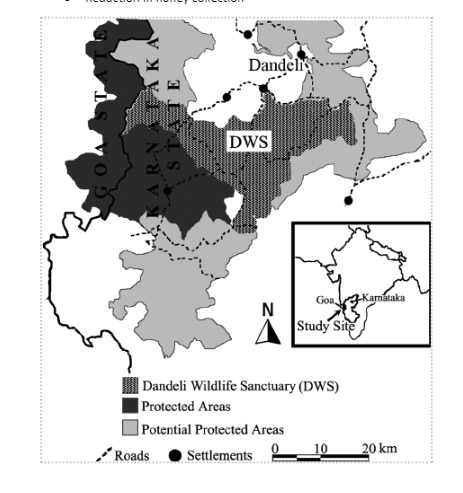
|
UPSC Civil Services Examination Previous Year Question (PYQ) Prelims
(a) Sathyamangalam Tiger Reserve Answer: (a)
(a) Khangchendzonga National Park Answer: (d) Which of the following Protected Areas are located in Cauvery basin? (2020)
Select the correct answer using the code given below: (a) 1 and 2 only (c) 1, 3 and 4 only Answer: (c) |
Udangudi Panangarupatti - Edukemy Current Affairs
Why in news? Recently, Udangudi ‘Panangkarupatti’ from Tamil Nadu has received a Geographical Indication (GI) Tag.
About:

- Udangudi Panangkarupatti is also referred to as palm jaggery.
- It is prepared using the palm sap collected from the inflorescence of palmyra trees that grow on the red sand dunes in and around the Tiruchendur region in Tamil Nadu.
Uniqueness:
- The uniqueness of Udangudi Panangkarupatti lies in its traditional preparation method, which does not involve the use of modern strategies or chemical additives like triple superphosphate and phosphoric acid, which are commonly used in other areas for jaggery production.
- This palm jaggery is distinct due to the presence of red sand dune soil found in the Udangudi region.
- This soil holds less groundwater. The moisture content in the atmosphere is less because of the dry climatic condition, which lead to a high sucrose content in the palm sap, enhancing its taste.
- The region’s dry climate is also suitable for storage of karupatti for a longer duration.
More Information:
- Udangudi jaggery has gained popularity not only locally but also internationally, being exported to countries such as Sri Lanka, Malaysia, and Singapore.
Ruddy Shelduk (Tadorna ferruginea)
Why in news? Recently, the first batch of about 50 members of the Ruddy Shelduk, popularly known as ‘Surkhab’ birds, arrived for a six-month winter stay.
About:
- Ruddy Shelduk belongs to the family Anatidae under the order Anseriformes.
- It is distributed in Europe, Asia, Indian Subcontinent and a few pockets in Africa.
- In India it is known as the Brahminy duck, and these ducks are migratory birds.
- They winter in the Indian Subcontinent, South India and Southeast Asia.
- They inhabit large wetlands, salt lakes, crater lakes, rivers with mud flats and shingle banks.
- It is a mainly nocturnal bird.
- It is omnivorous and feeds on grasses, the young shoots of plants, grain and water plants as well as both aquatic and terrestrial invertebrates.
- They are no sitting ducks; they scale the mighty Himalayas when flying to India from the north attaining heights of 6,800 metres.
- Conservation status - IUCN: Least Concern
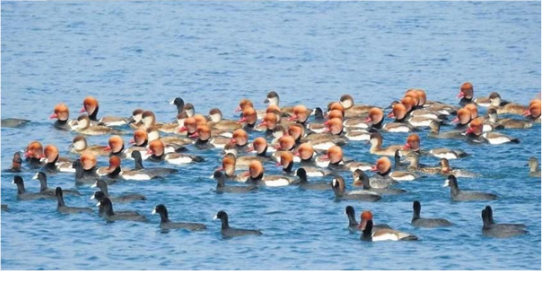
Garumbatitan Morellensis - Edukemy Current Affairs
Why in news? Recently, scientists discovered a massive, long-necked dinosaur 'titan' in Spain and named it Garumbatitan morellensis.
About:
- It was a Titanosaur species, which is a subgroup of sauropods.
- It was the only lineage to survive until the dinosaur-killing asteroid struck around 66 million years ago.
- These massive fossils, as per estimates, date back to the Lower Cretaceous period (some 145 to 66 million years ago).
- These titans belonged to the sub-group Somphospondyli.
- Titanosaur species lived from the Late Jurassic Epoch (163.5 million to 145 million years ago) to the end of the Cretaceous Period (145 million to 66 million years ago).
- Titanosaur fossils have been found on all continents except Antarctica and include some 40 species.
- The group contains the largest terrestrial animals known, some even approaching the size of modern whales.
- They also possessed vertebrae with a honeycomb-like internal structure and six sacral vertebrae.
The Digital India Act 2023 - Edukemy Current Affairs
Exam View: Objective of Digital India Act, 2023; Key Provisions of Digital India Act, 2023; Significance of Digital India Act 2023; Challenges in Implementation of DIA 2023.
Context: The Ministry of Electronics and Information Technology (MeitY)’s recent announcement of the Digital India Act, 2023 (DIA) is a timely and significant step towards establishing a comprehensive legal framework for the country’s rapidly growing digital ecosystem.
Objective of Digital India Act, 2023:
- Establish a comprehensive legal framework for the digital ecosystem in India, including emerging technologies such as artificial intelligence and blockchain.
- Promote online safety and trust by safeguarding citizen's rights in the digital realm. Protect users from cyber harms such as cyberstalking, trolling, and doxing to promote data privacy and protection.
- Support innovation and the growth of the digital economy.
- Align India's digital regulatory landscape with international standards and best practices.
- Regulate online content to ensure that it is safe and ethical and foster responsible innovation in the digital sector.
- Establish mechanisms for accountability and redressal in the digital realm.
Key Provisions of Digital India Act, 2023
- Prioritising Online Safety and Trust: The DIA 2023 places strong emphasis on online safety and trust, with a commitment to safeguarding citizen’s rights in the digital realm while remaining adaptable to shifting market dynamics and international legal principles.
- Guiding Responsible Innovation in New-Age Technologies: DIA recognises the growing importance of new-age technologies such as artificial intelligence and blockchain and provides guidelines for their responsible utilisation.
- Shaping development of technology in an ethical manner: Adoption of technologies is being encouraged but DIA ensures that their deployment is in line with ethical and legal principles. Market should not be the sole determiner of the use of technologies.
- DIA strikes a balance between fostering innovation and safeguarding against potential harms. It promotes ethical AI practices, data privacy in blockchain applications, and mechanisms for accountability in the use of these technologies.
- Open Internet: DIA upholds the concept of an open internet, striking a balance between accessibility and necessary regulations to maintain order and protect users.
- DIA mandates stringent Know Your Customer (KYC) requirements for wearable devices, accompanied by criminal law sanctions.
- Safe Harbour Principle: DIA reviews the safe harbour principles which shields online platforms from liability related to user-generated content, indicating a potential shift in online accountability standards.
Significance of Digital India Act 2023:
- Comprehensive legal framework: The DIA is a comprehensive legal framework that encompasses the entire digital ecosystem, including emerging technologies such as AI and blockchain.
- Obsolete Regulatory framework: The existing IT Act of 2000 was developed when the internet had only 5.5 million users. Today there are more than 850 million users and the current framework is ill-equipped to handle the complex and evolving challenges.
- Alignment with international standards: The DIA is aligned with international standards and best practices in digital regulation. This is important to ensure that India remains a competitive player in the global digital landscape.
- Boost India’s digital economy: The DIA is expected to boost the Indian digital economy by creating new opportunities for businesses and entrepreneurs.It is also necessary for the success of Digital India mission.
- Ensure a secure, accountable, and innovative digital future: DIA represents a forward-looking approach to regulation in an age of constant change and has the potential to shape the country’s digital landscape for generations to come.
Challenges in Implementation of DIA 2023:
- Impact on innovation and the ease of doing business: Stricter regulations, particularly in emerging technologies, could inadvertently stifle entrepreneurial initiatives and deter foreign investments.
- Freedom of expression: The review of the “safe harbour” principle, could lead to a more cautious approach among platforms, impinging on freedom of expression.
- Effective enforcement: The DIA’s success hinges on effective enforcement, which will require substantial resources, expertise, and infrastructure.
- Balancing stakeholder interests: Balancing the interests of various stakeholders, including tech giants, while ensuring the protection of citizen rights, poses a significant challenge.
Way Forward:
- Stakeholder consultation and wide scale engagements are necessary to develop a comprehensive and balanced regulatory framework.
- Effective implementation through capacity building and collaboration with other countries and international organisations to align with global best practices.
|
UPSC Civil Services Examination, Previous Year Questions (PYQs) Prelims: Q1. ‘Right to Privacy’ is protected under which Article of the Constitution of India? (2021) (a) Article 15 Answer: (c) Q2. Right to Privacy is protected as an intrinsic part of Right to Life and Personal Liberty. Which of the following in the Constitution of India correctly and appropriately imply the above statement? (2018) (a) Article 14 and the provisions under the 42nd Amendment to the Constitution. Answer: (c) Mains: 2017
|
Source: How the Digital India Act will shape the future of the country’s cyber landscape - The Hindu.
Share the article
Edukemy’s Current Affairs Quiz is published with multiple choice questions for UPSC exams
MCQ
Get Latest Updates on Offers, Event dates, and free Mentorship sessions.

Get in touch with our Expert Academic Counsellors 👋
FAQs
UPSC Daily Current Affairs focuses on learning current events on a daily basis. An aspirant needs to study regular and updated information about current events, news, and relevant topics that are important for UPSC aspirants. It covers national and international affairs, government policies, socio-economic issues, science and technology advancements, and more.
UPSC Daily Current Affairs provides aspirants with a concise and comprehensive overview of the latest happenings and developments across various fields. It helps aspirants stay updated with current affairs and provides them with valuable insights and analysis, which are essential for answering questions in the UPSC examinations. It enhances their knowledge, analytical skills, and ability to connect current affairs with the UPSC syllabus.
UPSC Daily Current Affairs covers a wide range of topics, including politics, economics, science and technology, environment, social issues, governance, international relations, and more. It offers news summaries, in-depth analyses, editorials, opinion pieces, and relevant study materials. It also provides practice questions and quizzes to help aspirants test their understanding of current affairs.
Edukemy's UPSC Daily Current Affairs can be accessed through:
- UPSC Daily Current Affairs can be accessed through Current Affairs tab at the top of the Main Page of Edukemy.
- Edukemy Mobile app: The Daily Current Affairs can also be access through Edukemy Mobile App.
- Social media: Follow Edukemy’s official social media accounts or pages that provide UPSC Daily Current Affairs updates, including Facebook, Twitter, or Telegram channels.


